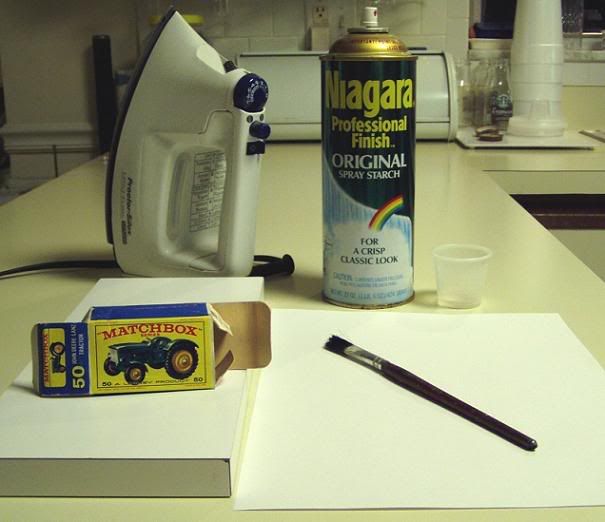How To Iron a Box.
Posted: Mon Sep 23, 2013 12:02 am
This box had a crushed corner, badly wrinkled an bowed end flaps and the edge that would make the top is creased outward and crowned. It would not sit level and could not hold a model.
Here's the "how to" instructions ...
Crumpled and or creased boxes:
Open box and fold flat. Place box on a hard surface like a clean ceramic cutting board (I use a 3/4" thick MDF board laminated in Formica). Set a clean sheet of white paper over the box. Next, I set my iron right between the steam and dry settings (with no water in the iron). Iron box flat and smooth. 98% of the time, I starch the interior of the boxes using care not to get them too wet.
Due care must be used so as not to get the box wet or damp through and through. Older boxes can soak up many things over the years and the sudden effect of a soaking could concentrate those things into a water stain.
Spray the starch into a plastic cup and use a brush to apply the starch to the inside of the box only.
List of tools needed:
Iron.
Starch.
Small cup.
Brush.
Flat heat resistant hard surface.
Here is the step by step pics:





Here's the "how to" instructions ...
Crumpled and or creased boxes:
Open box and fold flat. Place box on a hard surface like a clean ceramic cutting board (I use a 3/4" thick MDF board laminated in Formica). Set a clean sheet of white paper over the box. Next, I set my iron right between the steam and dry settings (with no water in the iron). Iron box flat and smooth. 98% of the time, I starch the interior of the boxes using care not to get them too wet.
Due care must be used so as not to get the box wet or damp through and through. Older boxes can soak up many things over the years and the sudden effect of a soaking could concentrate those things into a water stain.
Spray the starch into a plastic cup and use a brush to apply the starch to the inside of the box only.
List of tools needed:
Iron.
Starch.
Small cup.
Brush.
Flat heat resistant hard surface.
Here is the step by step pics:




